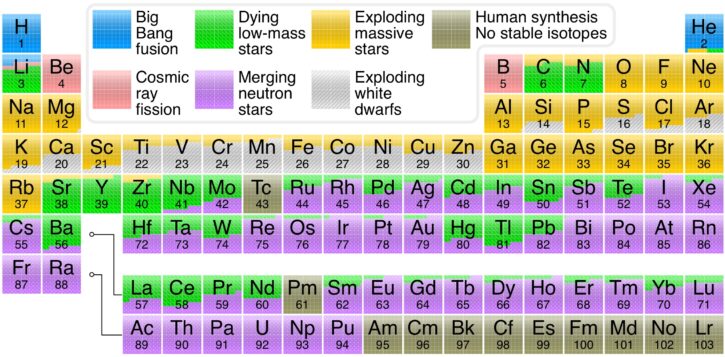
The second phase of The Nexus Theory (TNT) is “variation.” If matter possesses the capacity to react, then the capacity to react differently introduces the idea of complexity, which is the fundamental requirement for the diversity of matter.
Evidence
Variation is best described by the progression of elements in the Universe: Bound to the apparent rules of our Universe, elementary particles began to change due to the process of stellar nucleosynthesis. First there was hydrogen, then helium, then eventually more complex elements such as carbon and oxygen. Each of these various elements were formed due to a particular reaction with their environment, as outlined in the below chart:

Each element has its own set of physical rules that govern both its creation and interaction with its environment. The greater the number of elements, the greater the potential diversity of nexuses within a system.
Within our system, the Universe, we’ve discovered 118 elements in total, 94 of which are non-synthetic (occur in nature without our influence). All of these elements can form compounds, which are substances that consist of two or more different elements chemically bonded together via the known bonding processes such as covalent bonding, hydrogen bonding, ionic bonding, etc.
The ability of these elements to form compounds adds vast layers of complexity to their future potential. In fact, even if we only consider the 94 naturally-occurring elements, it’s impossible to provide an exact number for the total possible compounds that could be formed due to the array of potential combinations being so large we’d experience the heat death of the Universe before actually mapping them all.
For example, some compounds can exist in different structural forms (polymorphs) or have the same molecular formula but different arrangements of atoms in space (isomers). Many elements also have multiple valence states, allowing them to form different compounds. And how these elements are bonded via the various chemicals bonding processes adds even more complexity.
Thus, we can safely assume the potential variation of matter in our Universe is virtually infinite.